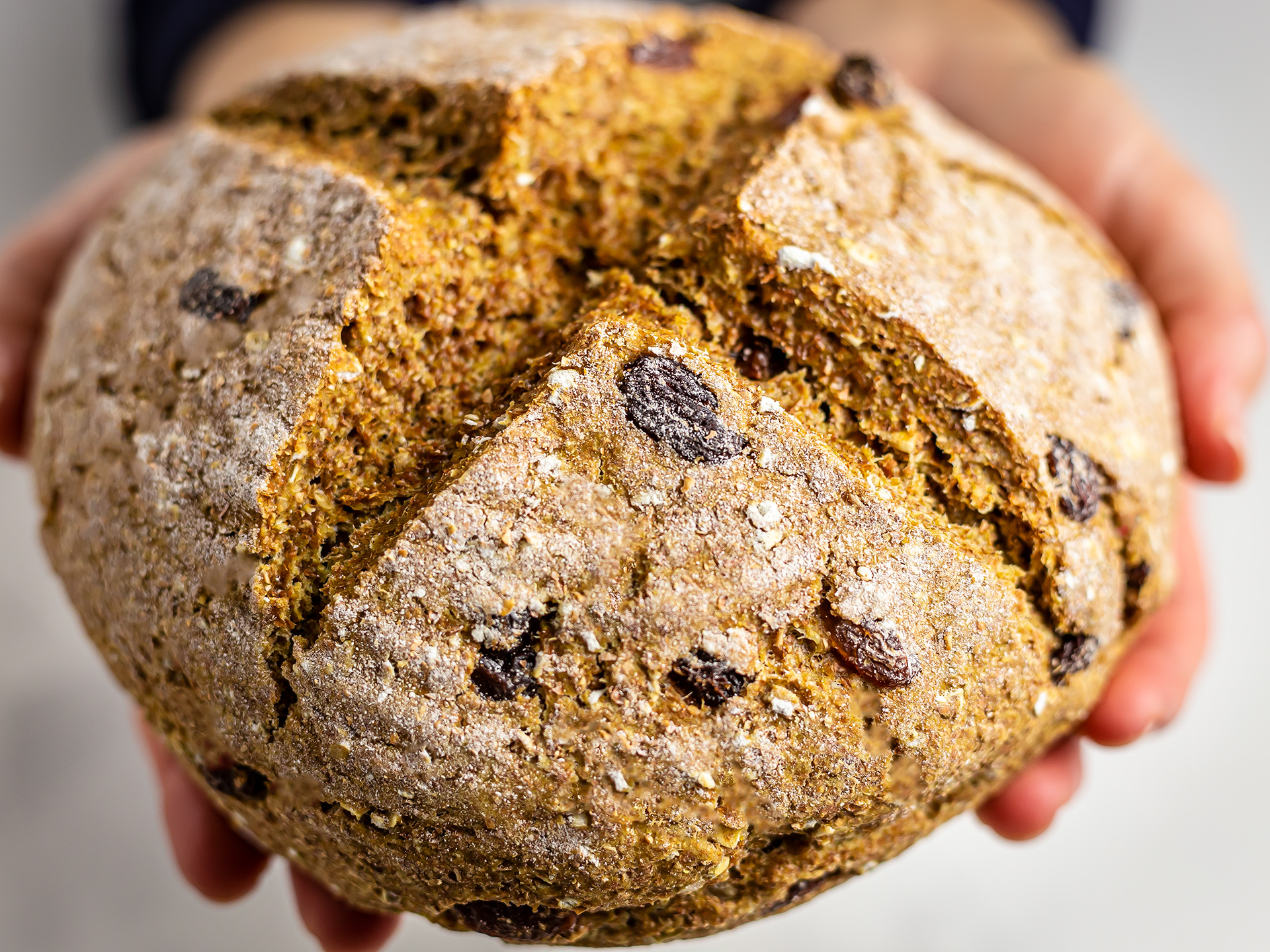If you like bread with raisins, are you are vegan or lactose-intolerant, then you are going to love this recipe: Vegan Irish Soda Bread. We made it without using buttermilk, so it's not just vegan and dairy-free, but also low-fat. Yum!
The recipe is quick and easy. Apart from a few minutes of whisking and kneading, you just kick back and let the oven take care of it. There are a few different ways to bake soda bread depending on what equipment you have. Make sure to read the FAQ below to learn about them.
There is only one thing in here that differs from the traditional recipe: buttermilk. We didn't use any. Instead, we made something similar using a combination of dairy-free soy yogurt and milk and lemon.
There are a few vegan recipes out there for Irish soda bread without buttermilk. After quite a lot of testing, we have altered the ratios commonly used to take into account the different binding properties of the vegan ingredients. Now we are belly-full of soda bread but confident you'll get a fragrant and delicious loaf!
Don't fancy dried grapes (raisins)? No problem! You can use anything else you like, including superfood goji berries, candied fruit, or even chocolate chunks. Or just keep it plain and add a bit more maple syrup to compensate for the loss of sweetness.
So, are you ready for the heartwarming fragrance of freshly baked bread? Put your baker hat on, and let's make it happen!
And if you're in for other tasty bread ideas, check out our pumpkin sourdough bread, red lentil bread, cheesecake factory brown bread, and mochi bread!
NOTE: The default ingredients yield one 1kg (2.2 lbs) loaf and one serving consists of two 30g (1oz) bread slices.
How can I bake soda bread?
Once you have kneaded your soda bread dough, the only thing left to do is baking. Many recipes out there use different appliances or techniques for cooking Irish bread. Let's take a look at the various options:
Only the conventional oven — This is the simplest and doesn't require any special equipment. Just shape the dough into a loaf and cook on a baking tray. Pro Tip: pour a little water in a preheated metal tray to release steam in the oven, which will give the bread a crunchier crust.
A bread baker cloche — This is what we used. A cloche comprises a clay or stoneware tray and a lid shaped like a dome. Its primary purpose is to keep the moisture inside while the bread bakes, which helps the crust get crunchy.
A DIY cloche — A cloche is a good investment if you bake a lot of bread. But if you have a pyrex casserole dish, you can improvise. Flip the pyrex dish upside down, so that the lid becomes the tray, and the body becomes the dome of the cloche.
A cast-iron skillet — Want to follow a more rustic approach? Place your dough onto a cast-iron skillet, and seal it with a lid made of aluminum foil. Shape the foil into a dome, leaving enough headspace for the bread to grow. If you are concerned about the bread sticking to the pan, you can cut a circle out of parchment paper and place it between the loaf and the skillet.
There may be more options out there, but these should cover most situations.
Which type of flour should I use?
It's called Irish bread, but it looks more like a cake inside. That's because you use plain flour instead of strong bread flour. You can use 100% wholemeal plain flour, 50/50 wholemeal and plain white flour, or 100% all-purpose flour.
We opted for 100% wholemeal flour route, as it's richer in fibres and thus healthier.
What's the difference between baking soda and baking powder in bakes?
Baking soda is the common name for sodium bicarbonate, a leavening agent used for bakes likes cakes, cookies, and muffins. This compound requires a liquid and acid ingredient to activate and release CO2. These air bubbles then help your baked goods to rise and get fluffy. Acidic ingredients include vinegar, cream of tartar, lemon juice, or buttermilk.
Baking powder, instead, is a combo of both baking soda and an acidic ingredient, plus other binders like cornstarch. Moreover, it activates twice: the first time when mixed with a liquid and the second during baking in the hot oven.
Using baking powder in bakes is easier as you won't have to use an acidic ingredient, just a liquid one. Also, baking powder offers a more long-lasting leavening power than baking soda.
However, some people may suffer from intolerance to baking powder and often feel bloated after consuming goods prepared with this leavening agent. Therefore, baking soda is an easy alternative for baking powder in these cases.
Ingredients
| Plain Soy Yogurt | 225 g |
| Soy Milk | 225 mL |
| Lemon Juice | 1 tbsp |
| Wholemeal Flour | 450 g |
| Rolled Oats | 50 g |
| Baking Soda | 2 tsp |
| Salt | 1 tsp |
| Maple Syrup | 2 tbsp |
| Raisins | 80 g |
Step 1
Preheat the oven to 200°C (390°F) in static mode.
Let's start by preparing the vegan buttermilk.
In a bowl, whisk soy yogurt with soy milk and lemon juice until well combined.
Then, leave the mixture to sit for 10 minutes while you get the other ingredients ready.
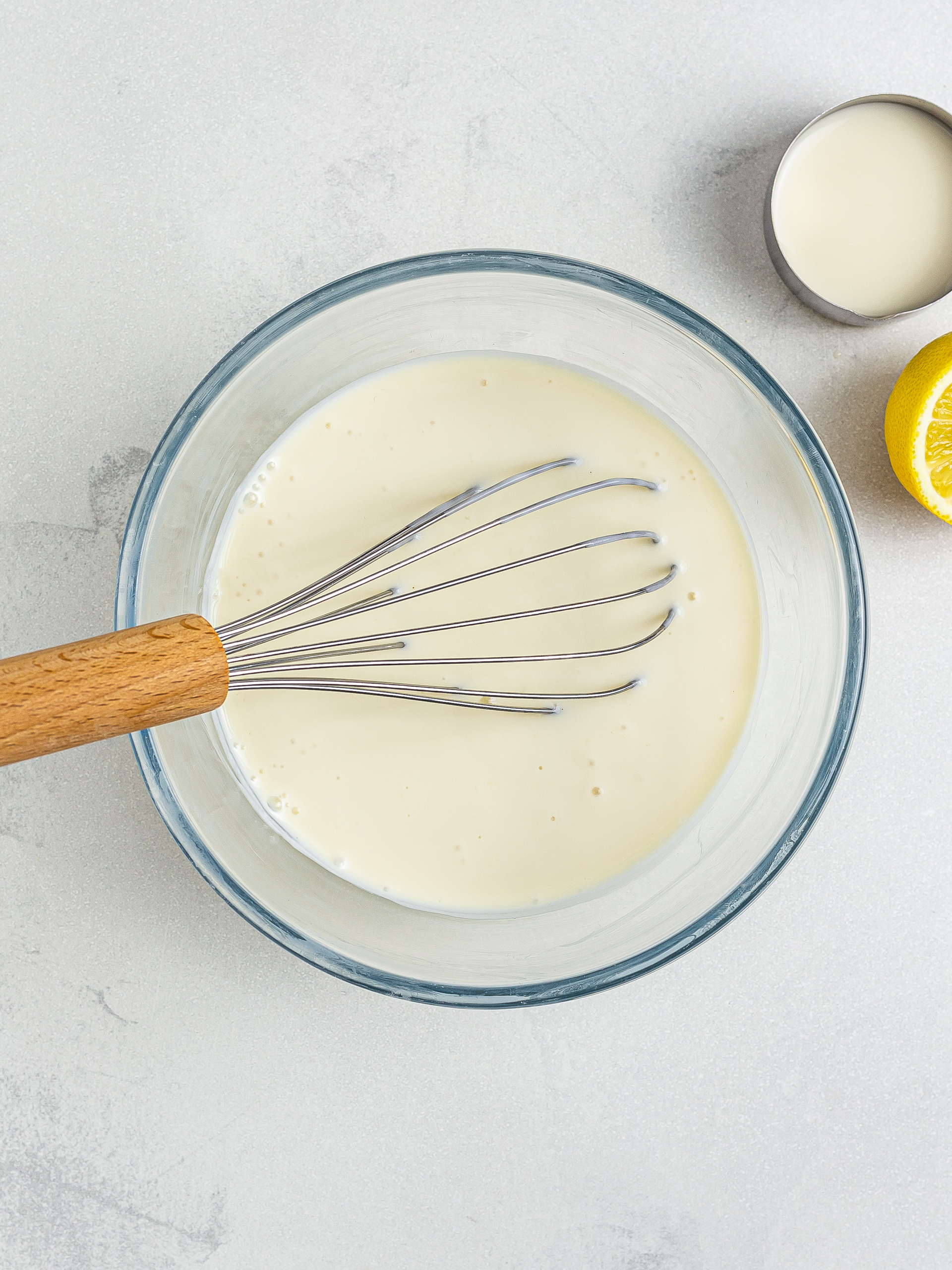
Step 2
Meanwhile, combine wholemeal flour with rolled oats in another bowl. Tip in also the baking soda and salt and mix well (1).
Then, add maple syrup, raisins and the prepared vegan buttermilk. Briefly work the ingredients until they come together into a soft dough. Then, transfer it onto a floured worktop and roughly shape it into a round loaf.
The dough will be very sticky and delicate, so just compact it into a loaf without kneading it too much (2).
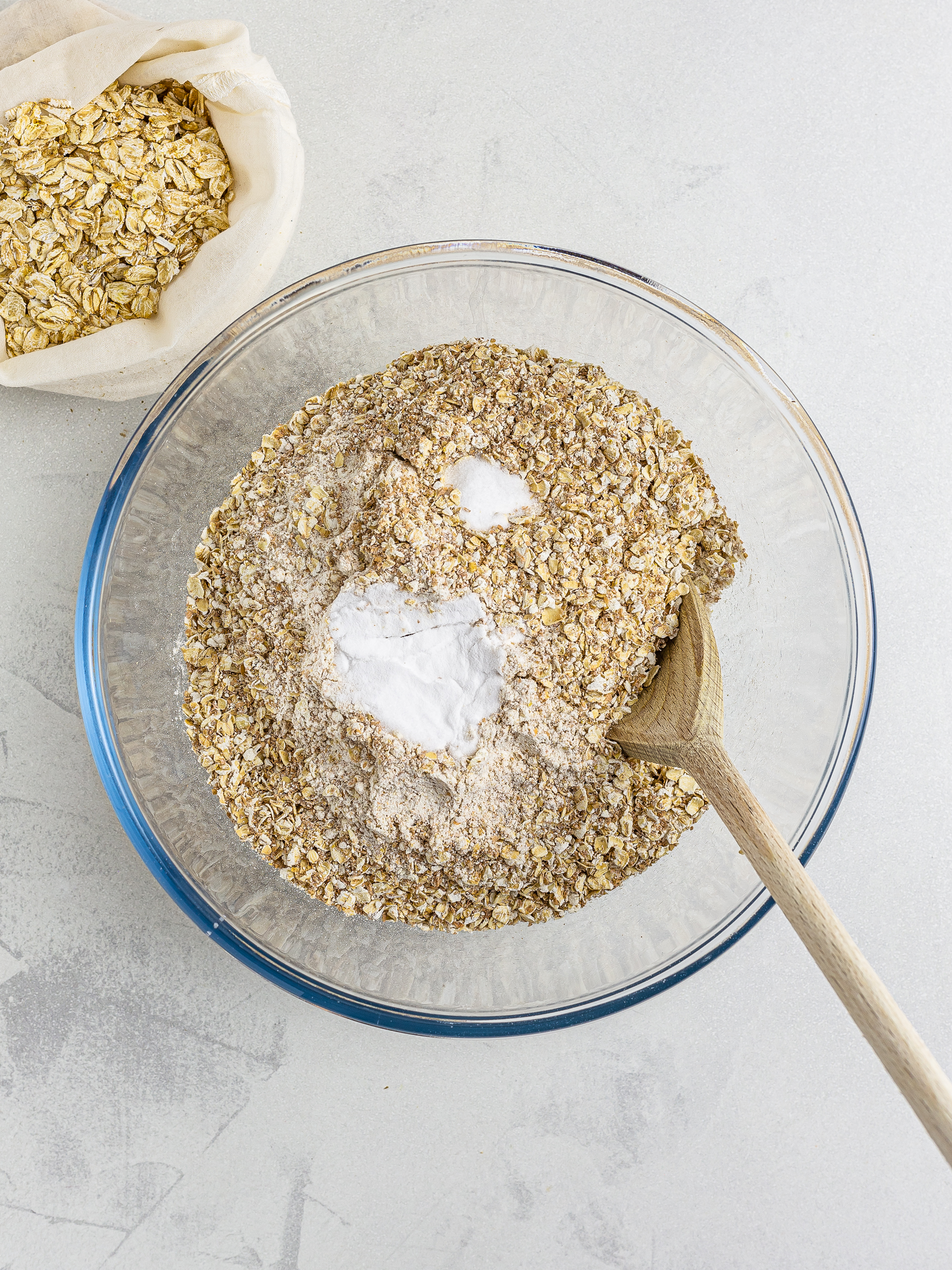
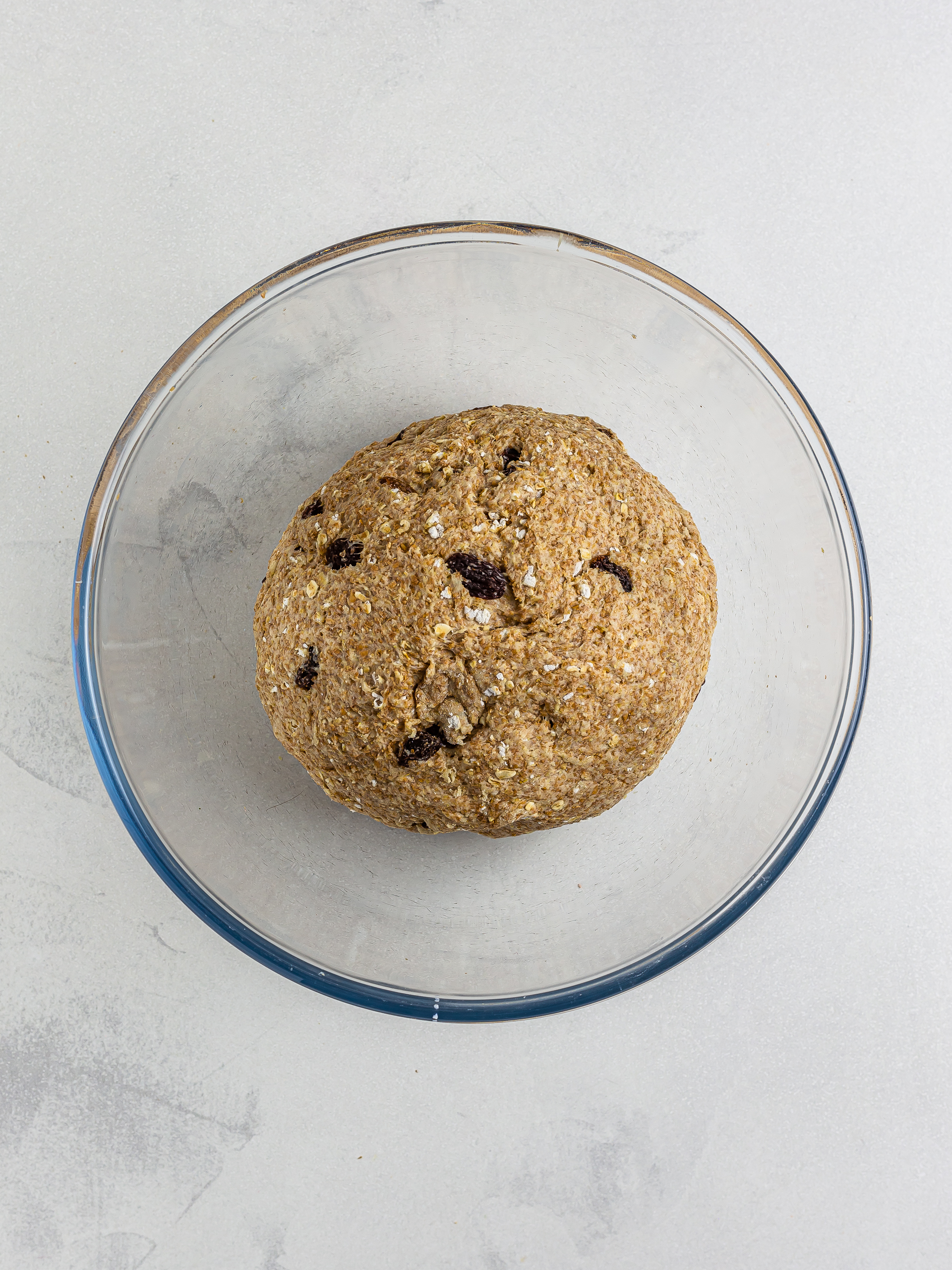
Step 3
Transfer the dough onto a floured baking tray or cloche (check out our FAQ for more tips on how what to use to bake Irish bread).
Then, score a cross in the centre using a sharp knife and bake the loaf for 40 minutes in the preheated oven.
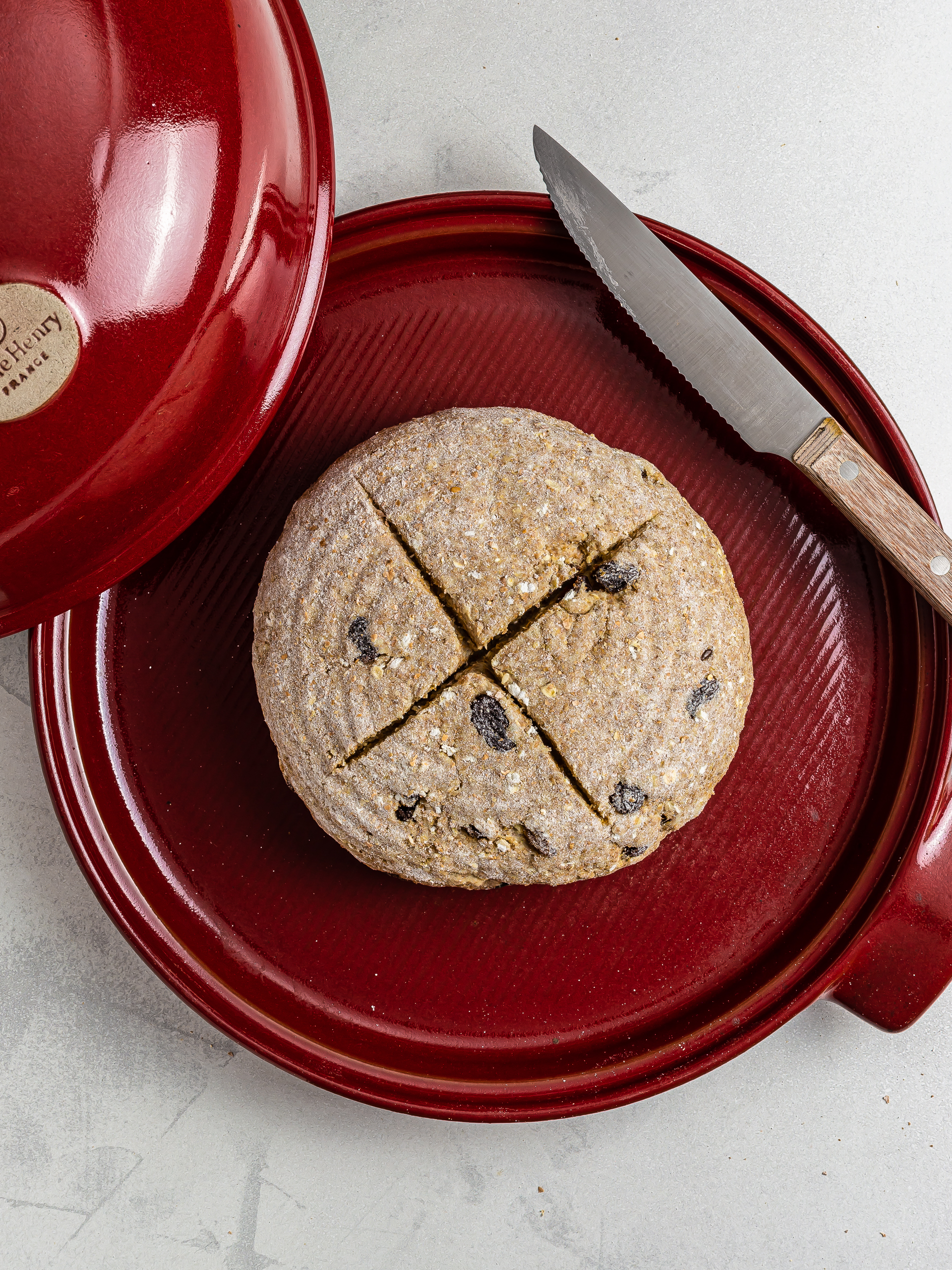
Step 4
Remove the soda bread from the oven and transfer it onto a wire rack to cool down.
The loaf will have a nice golden crust and a soft crumb.
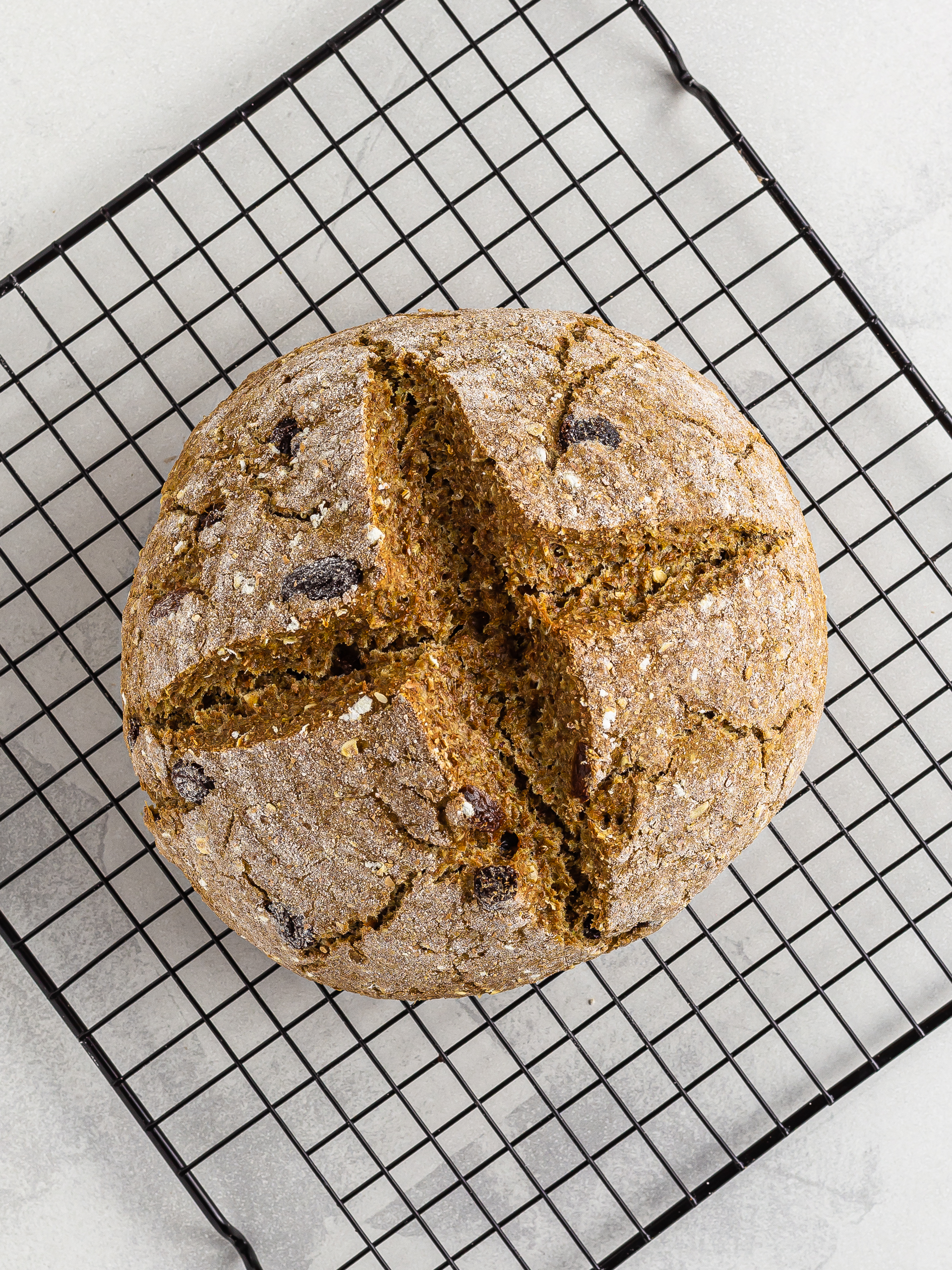
Tips
For extra flavour and nutrition, you can add pumpkin seeds to the bread dough.
